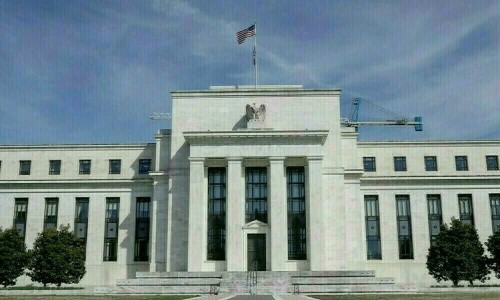US Federal Reserve Anticipated to Maintain Rate Pause Amid Economic Uncertainty
Washington D.C. – The US Federal Reserve is widely expected to maintain its current stance on interest rates during Wednesday’s meeting, navigating the economic uncertainties resulting from President Donald Trump’s fluctuating tariff policies.
The Federal Open Market Committee (FOMC) commenced its second day of discussions at 9:00 am local time, as confirmed by the central bank. The decision will be revealed later today, followed by a press briefing led by Fed Chair Jerome Powell.
Since the beginning of his term, the Trump administration has escalated tariffs on major trade partners, including Canada, China, and Mexico, only to later retract some. The administration has also indicated possible reciprocal tariffs on other nations, unsettling US financial markets.
Numerous experts are concerned that Trump’s trade tariffs, government job reductions, and immigration proposals could elevate inflation and hinder economic progress. This situation further complicates the Federal Reserve’s objectives of reducing inflation to its intended 2% target while sustaining a robust employment sector.
It is anticipated that Fed policymakers will likely keep interest rates in the 4.25% to 4.50% range and suggest they will await further clarification on the economic repercussions of the new administration’s strategies before considering any rate reductions.
Former Boston Fed President Eric Rosengren stated, “There won’t be adjustments to the interest rate, and there’s a valid reason for that. The scope and duration of the tariffs remain unclear, making it challenging to predict their impact on inflation or unemployment until more information becomes available.”
Economic Forecasts and Uncertainty
The FOMC is also set to release revised economic predictions on Wednesday. Several analysts predict that trade uncertainties could prompt the committee to slightly raise its inflation expectations and reduce its economic growth forecasts.
White House National Economic Council Director Kevin Hassett mentioned in an interview that a key question for the Fed is transitioning from tighter monetary policy to a more neutral approach, suggesting this shift may occur over the next few meetings.
Slowing Economy Concerns
Recent economic data had indicated a reasonably strong US economy, with the Fed’s preferred inflation gauge showing a 2.5% increase year-over-year through January. This figure is above the target but significantly lower than the peak observed in 2022.
Throughout 2024, the economy demonstrated relatively strong expansion, and the job market remained stable, marked by significant job creation and historically low unemployment rates.
However, sentiment has changed since Trump’s return to the White House, with increasing inflation expectations and declining financial markets linked to the inconsistent implementation of tariffs.
Fed Chairman Jerome Powell remarked on the ambiguity surrounding Trump’s economic initiatives, stating, “We are not compelled to act swiftly and can afford to await greater clarity.”
Analysts’ Perspectives
While Fed officials have generally avoided direct criticism of the new administration, certain analysts have expressed more critical views.
Michael Strain, the director of economic policy studies at the American Enterprise Institute, described President Trump’s handling of economic policy as a “disaster” in a recent statement.
In December, Fed policymakers had projected two quarter-point rate cuts for the current year.
However, due to trade uncertainties, economists at Barclays anticipate that policymakers may reduce this to just one cut this year.
Nationwide chief economist Kathy Bostjancic anticipates the Fed to forecast two cuts this year but ultimately implement only one, citing significant uncertainty and hoping for greater clarity on the US economy following the planned rollout of Trump’s retaliatory tariffs on April 2.



Comments (0)
No comments yet. Be the first to comment!
Leave a Comment